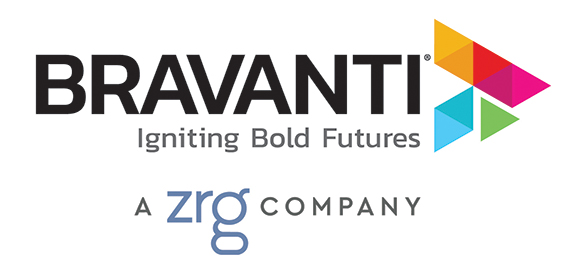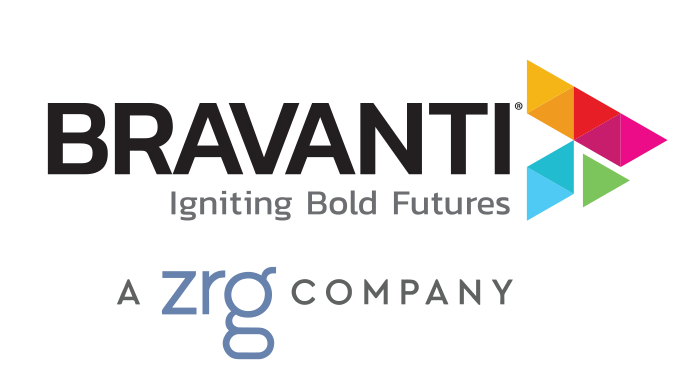By Bravanti
When it comes to business continuity planning, HR leaders play a unique role. They offer data and insights on the most important component of any organization: its people. This positions HR as a critical player and integral resource in maintaining or restarting business operations after a critical event.
We’ve outlined some key ways HR professionals can work with organizational leaders to ensure a people-first approach to business continuity planning during COVID-19 and beyond.
Drive the Communication Strategy During Business Continuity Planning
As talent leaders, you are at the forefront of employee communications, especially when it comes to change.
Work with executives from every department to craft a sound communication strategy that informs, reassures, and motivates employees through challenging times. Establish a minimum standard of quality that each communication piece must meet prior to dissemination and work with people leaders at every level to help them relay and reinforce important information to their teams.
Communication isn’t just about how the organization communicates to its employees. Establish and maintain open, two-way communications with employees that seeks input and feedback, encourages constructive dialogue, and promotes honest, transparent conversations.
If you haven’t already, consider deploying periodic pulse surveys to gauge employee morale, ask whether support is needed, understand how to better address needs, and more. Your employees will feel heard and you will gain invaluable insights into the overall health of your organization.
Guide Workforce Decisions
Current unemployment reports from Bureau of Labor Statistics (BLS) confirm what many feared would happen: COVID-19-related force reductions have impacted women and minorities more than any other groups.
This issue was first reported in April following the first post-outbreak unemployment report and, a month later, doesn’t show signs of improving.
As change forces your organization to restructure or reduce its workforce, it’s important that inclusion and equality initiatives aren’t sidelined or dismissed. Be a champion for these initiatives and remind executives of the “why” behind them. To reinforce your efforts, these statistics showing tangible ROI on workforce diversity may help.
Identify Labor Supply Chain Limitations
While some industries are suffering from lack of demand, others are suffering from lack of labor due to lockdown measures.
Understanding the labor constructs that power your organization is the key to agility, ensuring it can operate at capacity today, next month, and in the years to come.
Work with internal leaders to create a holistic outlook for your organization’s labor supply chain. This outlook should account for full- and part-time employees, freelancers, suppliers, third-party vendors, channel partners, etc., and whether they support functions that are mission–critical, important, standard, or ancillary.
It should also account for domestic and international locations and how local governments are handling the outbreak. Develop contingency plans for mission–critical and important functions to prevent labor supply interruptions.
Once complete, keep your labor supply chain map and updated to ensure quick decision-making when circumstances change.
Establish and Communicate Clear Guidelines for Remote Work, PTO, Sick Pay, Etc.
This is likely one of the areas where your employees have the most questions.
Create and routinely update your employee remote work and paid/unpaid leave policies and ensure that your people leaders are aware of any changes now and in the future. Prepare an FAQ sheet and other resources that provide clear directives for employee time and benefits during COVID-19.
Especially since the onset of COVID-19, we’ve all had to acclimate to remote work. Now more than ever is a time to over-communicate expectations and policies in these areas.
Empower Your People Leaders to Lead With Confidence
From managing a fully remote workforce to leading change initiatives during times of uncertainty, most people leaders are learning difficult leadership lessons in a uniquely challenging environment.
Identify high-priority focus areas and create an action plan that equips your people leaders with tools and resources to overcome these challenges. This will enable them to better support their teams, mitigate performance dips, and maintain morale.
Ensure Leadership Continuity
Succession planning is an important priority, especially during a global pandemic.
Work with internal leaders to produce or update succession plans for key leadership roles. Simply having an idea or general succession plan outline isn’t enough; all succession plans should be well-documented and stored together in an accessible location so leaders can easily find them in an emergency.
Even if you regularly review your continuity plans, review them again in the context of COVID-19 to ensure that all contingencies, even an unprecedented global pandemic, are accounted for in each plan.
Secure Sensitive Records
With focus on COVID-19 related operational challenges, businesses could be more vulnerable to malware or ransomware attacks.
Work with your IT department leaders to ensure that employee records are factored into all other sensitive record protection measures.
Lead Workplace Re-Entry Planning
While we don’t have a clear timeline at the moment, we are starting to re-enter the workplace and eventually it will likely look far different than before.
Reentry will require a significant amount of planning and preparation. Many companies are already well on their way to establishing policies and procedures for ensuring a safe, healthy, and flexible workplace.
HR’s Role in Business Continuity Planning
Talent leaders have an intrinsic ability to communicate effectively, lead with empathy, and drive positive change within their organizations.
It’s hard to imagine a scenario where these qualities are more important than where we are today.
The role of HR in business continuity transcends that of simply staying in operation; HR can help lead their organizations through difficult times by emphasizing the need for business decisions that reinforce values-driven, people-first operations whether in good times or bad.
Content Related to HR’s Role in Business Continuity Planning
5 Ways HR Can Impact Business Strategy
Internal Mobility in the Age of Attrition: Improving Retention Through Career Transparency
Diverse Leadership Pipelines are Key to High-Performing Organizations

